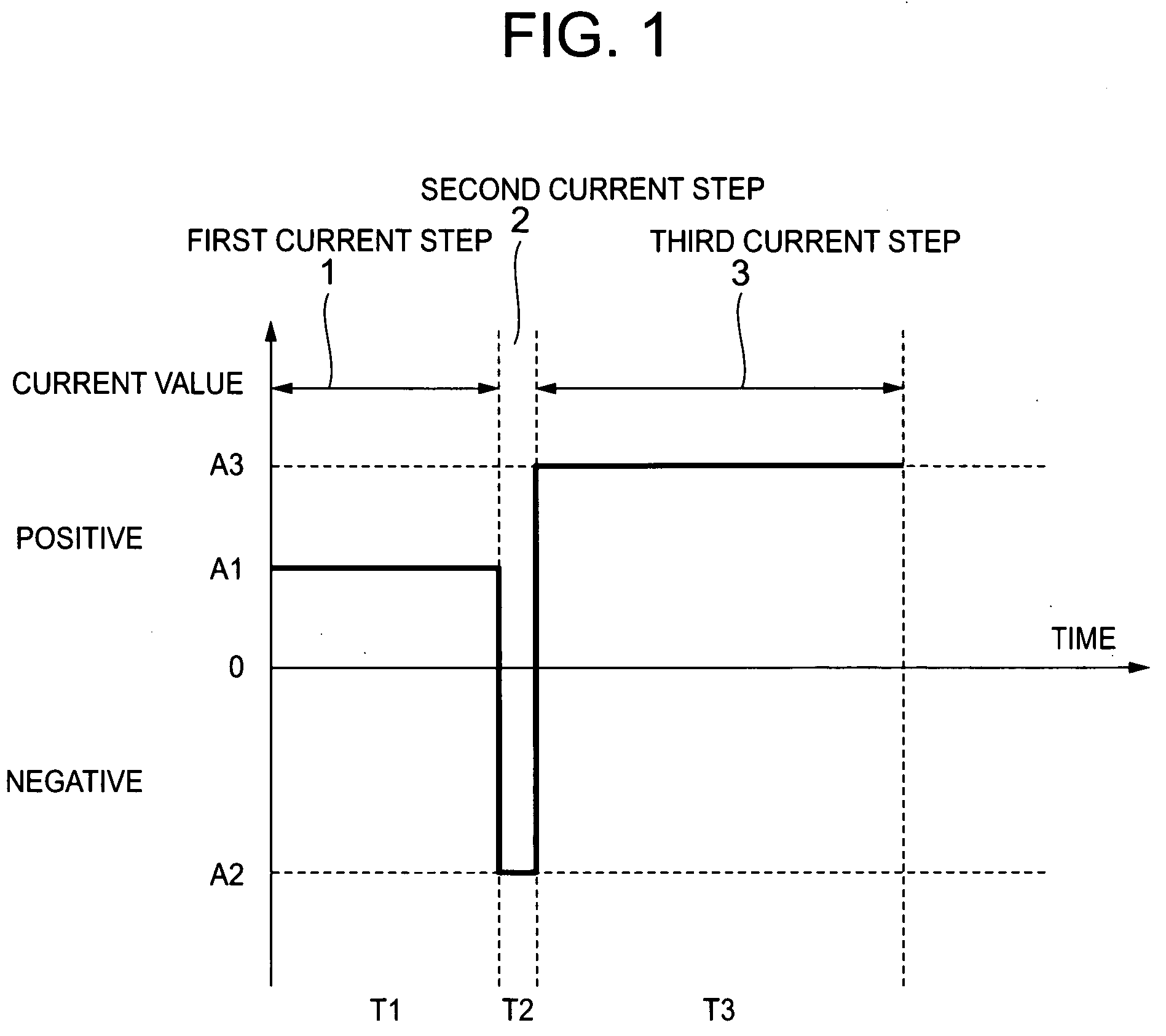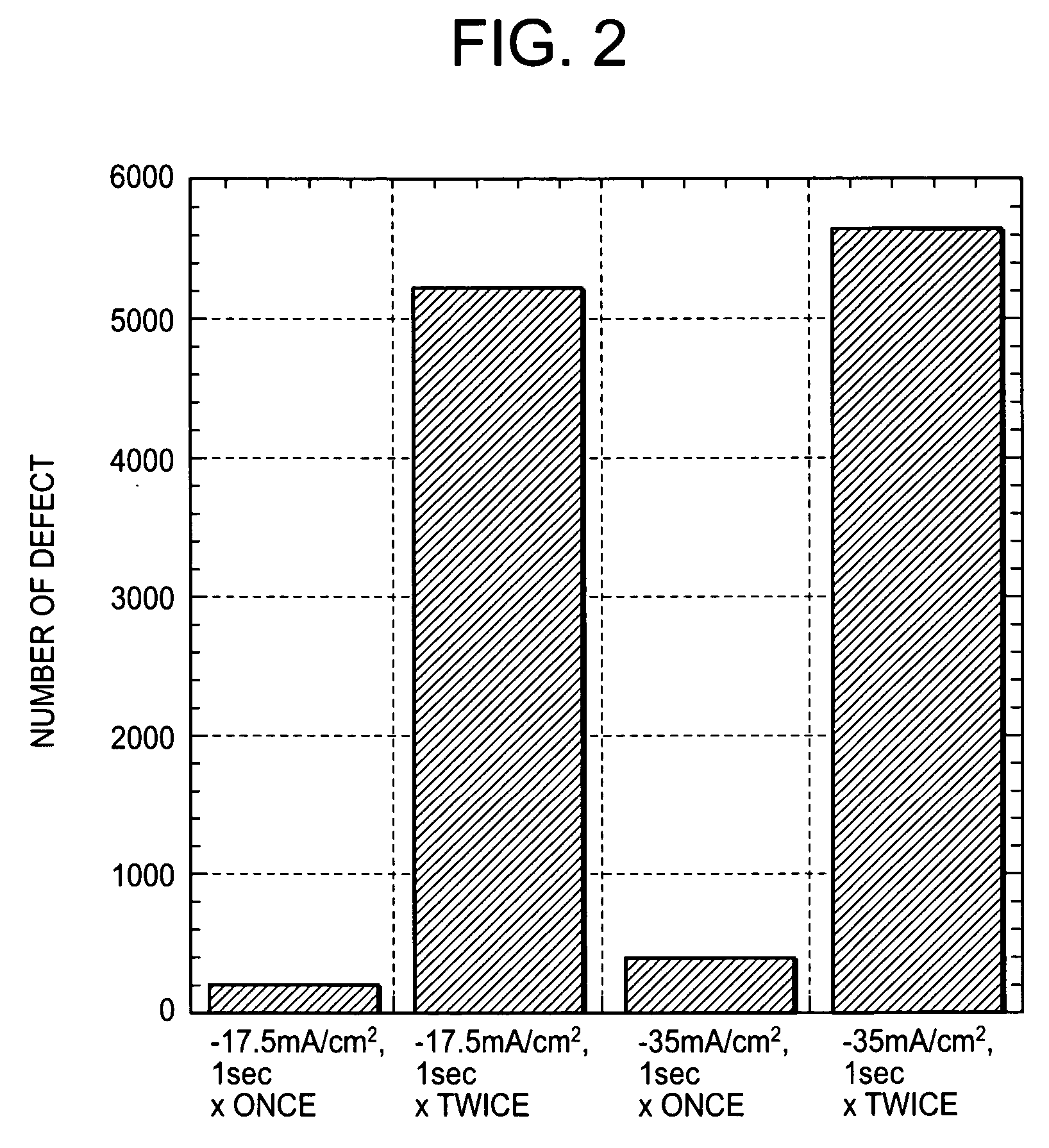Method of manufacturing semiconductor device having damascene interconnection
a technology of damascus and semiconductors, applied in the direction of semiconductor devices, basic electric elements, electrical appliances, etc., can solve the problems of large load on the cmp, erosion 13 and dishing 14 after cmp are unavoidable, and fine patterns are displaced
- Summary
- Abstract
- Description
- Claims
- Application Information
AI Technical Summary
Problems solved by technology
Method used
Image
Examples
Embodiment Construction
[0044] First, the damascene process according to the Example of the present invention will be described referring to FIG. 4. FIG. 4 is a sectional process diagram showing the procedures of the Damascene process whereto the current steps on the Cu plating of the present invention are applied.
[0045] First, as FIG. 4 (a) shows, an etching-stop film 10 and an interlayer insulating film 5 are sequentially formed in thickness of 50 nm and 30 nm, respectively, on a semiconductor substrate 4 using the well-known CVD method, plasma CVD method, or the like. Thereafter, an antireflective film 11 of a thickness of about 50 nm for suppressing the reflection of exposure light is deposited on the interlayer insulating film 5, and then a chemical-amplification-type resist of a thickness of about 500 nm for forming wiring-trench patterns 6 are applied to the antireflective film 11, and exposure and development are performed using KrF photolithography to form a resist pattern 12.
[0046] Next, as FIG. ...
PUM
| Property | Measurement | Unit |
|---|---|---|
| thickness | aaaaa | aaaaa |
| thickness | aaaaa | aaaaa |
| thickness | aaaaa | aaaaa |
Abstract
Description
Claims
Application Information
 Login to View More
Login to View More - R&D
- Intellectual Property
- Life Sciences
- Materials
- Tech Scout
- Unparalleled Data Quality
- Higher Quality Content
- 60% Fewer Hallucinations
Browse by: Latest US Patents, China's latest patents, Technical Efficacy Thesaurus, Application Domain, Technology Topic, Popular Technical Reports.
© 2025 PatSnap. All rights reserved.Legal|Privacy policy|Modern Slavery Act Transparency Statement|Sitemap|About US| Contact US: help@patsnap.com



